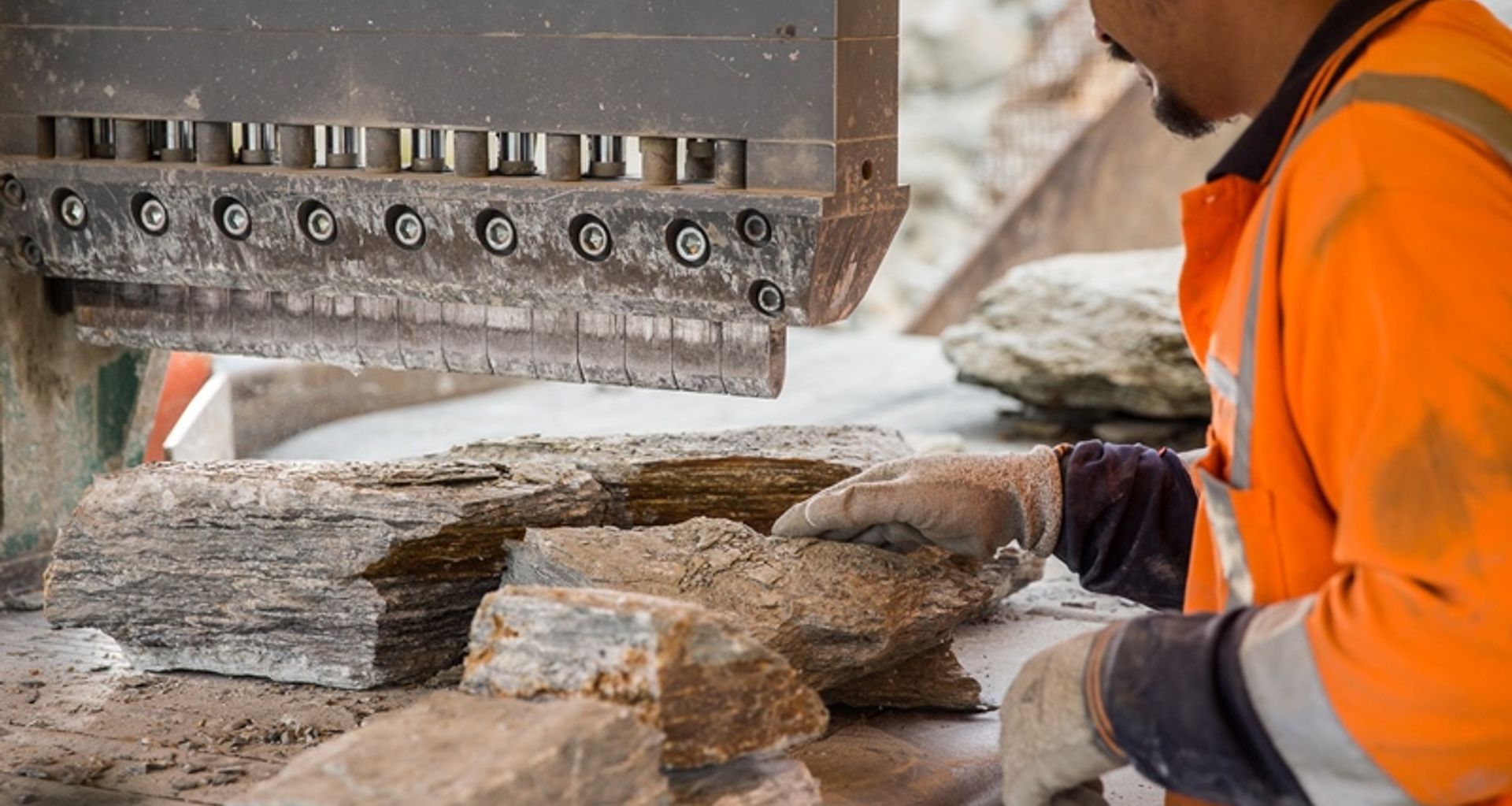Cluden Stone Quarry bringing stone cutting into the 21st Century

The first building stone to be taken from Cluden Quarry was loaded straight into a truck and transported to its final destination. Stonemasons used sledge hammers and bolsters to break it into pieces usable for cladding. The work was hard, slow and resulted in significant waste rock.
Older buildings clad with this stone are easily spotted around Wanaka town centre. Each piece of stone tends to be quite small, rustic in appearance and have a large number of natural gold-brown faces. The styles laid almost always used a mortar joint of 10mm or more.
Guillotines were introduced to New Zealand around 15 years ago, with some possibly being used earlier. They completely changed the way stone was used, with the breaking and cutting of stone occurring at the quarry instead of onsite.
These hydraulic powered machines were all engineered locally and work in much the same way as a log splitter, they are designed to cut the schist along the natural lineation, creating a fresh straight face for laying. Guillotine cut stone makes life easier for the stonemason as they receive pre-cut stone and only have to trim it, rather than breaking it with a sled hammer and bolster. It also makes transport more efficient because only useable stone is being carted, waste rock stays in the quarry and doesn’t need to be removed at the completion of the job either.
These days Cluden Stone Quarry work closely with many architects, stonemasons and home builders to cut stone how they prefer it. Whether it is specific colours, shapes or textures we are happy to work with the client to achieve the desired results.
Schist is the metamorphic basement rock of the whole of Otago district, with outcrop from the coast around Dunedin right through to the Southern Alps and West Coast of New Zealand. It formed over 200 million years ago during the Jurassic period.
Schist has many different colours and textures and they all tell a part of the story of how it was formed. The blue and grey colours that form the predominant colour of Wanaka Schist from Cluden Stone Quarry was originally sandstones that have undergone intense heat and pressure. The charcoal blacks would have originally been mudstones, possibly with lots of organic matter present.
